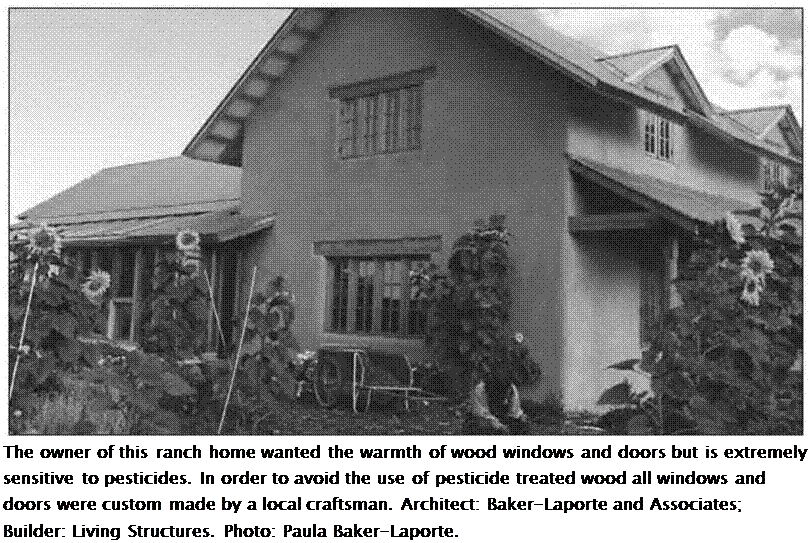Openings
Wood doors, both solid and paneled, are typically treated with biocides and manufactured with toxic glues. Paneled wood doors use less glue than solid veneered doors and will therefore outgas less. The face veneer used on flush wood doors is luan, a mahogany commonly imported from the Philippines or Thailand, where it is obtained using forestry practices that damage the environment. Interior firerated doors and hollow-core doors often contain a particleboard center that will continuously outgas formaldehyde fumes. Standard manufactured doors should be sealed to lock in harmful vapors. We recommended the following specifications when using standard manufactured doors: [12] [13]
• For a painted finish, prime all six sides with one of the primer paints that seals in VOCs, as listed in Division 9.
Choosing custom doors allows you to select style, type of wood, and finishes. Some custom door manufacturers will work with you to create a healthier product by using benign glues and less-toxic shop finishes. You can also purchase doors unfinished and have the contractor finish them according to your specifications. Although most custom doors are more expensive, some custom door companies have production or builder lines, which are almost cost competitive with manufactured doors. Paulas chemically sensitive clients who wish to have the warmth and beauty of wood without the terpene emissions of pine doors will often order doors made of harder, less odorous woods such as maple or poplar. For custom doors, specify the following:
•
 |
Doors shall be glued with a solvent-free glue such as Elmer’s Carpenter’s Glue, Envirotec Health Guard Adhesive #2101, or Titebond Solvent Free Construction Adhesive.
• Doors shall be finished using the specified low-toxic finish (refer to Division 9 for choices) or with an approved shop – applied finish. Submit a dated sample, MSDS, and product literature for owner’s approval of any proposed shop finishes.






Leave a reply